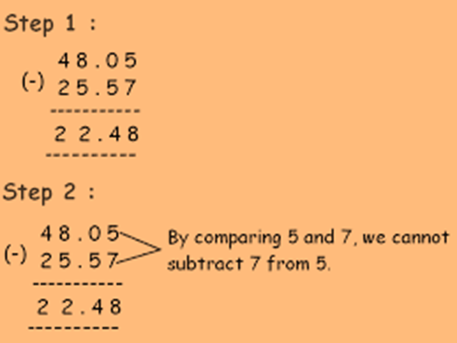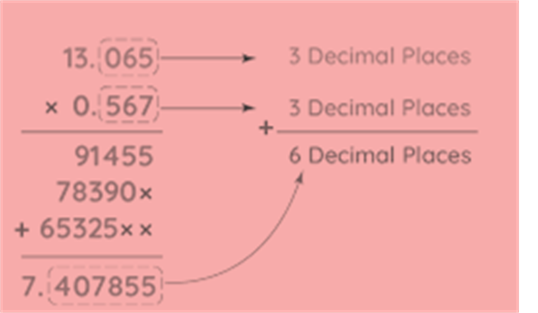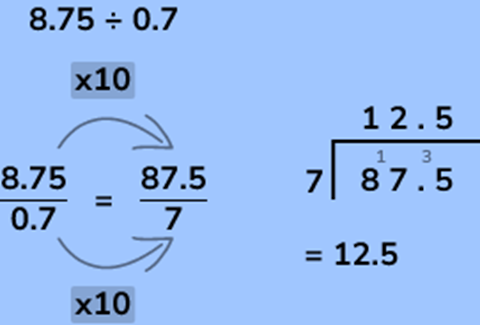- Books Name
- class 7 Mathematics Book
- Publication
- ReginaTagebücher
- Course
- CBSE Class 7
- Subject
- Mathmatics
Basic operations on decimal numbers
Addition and Subtraction of Decimal Numbers
Addition of Decimal numbers:
The rules for addition of numbers with Decimals are:
- Numbers are written under each other. The decimal points lie under each other, in the same vertical line.
- Addition is done column wise.
- Addition is started from the right hand side and then we move to the left hand side.

Subtraction of Decimal numbers:
The rules for subtraction are:
- The smaller number is written under the bigger number.
- The numbers are written in such a way that the decimals are in the same vertical line.
- Subtraction is started from the right hand side.

Multiplication of decimal numbers
When two decimal numbers are multiplied, we simply multiply the numbers (without their decimal points)
Then we count the total number of digits after the decimal point, taking both the decimal numbers.
The decimal point is placed in the product such that the total number of digits after the decimal point is equal to the total number obtained

When a decimal number is multiplied by 10, 100 or 1000, the digits in the product are same as in the decimal number but the decimal point in the product is shifted to the right by as , many of places as there are zeros over one.
Division of Decimal Numbers
Firstly, write the decimal numbers in fractional form. For e.g. 0.5 is 5/10.
Multiply the dividend with the reciprocal of divisor. The answer obtained is the required answer.

While dividing a number by 10, 100 or 1000, the digits of the number and the quotient are same but the decimal point in the quotient shifts to the left by as many places as there are zeros over one.

 Param Publication
Param Publication
 ReginaTagebücher
ReginaTagebücher
